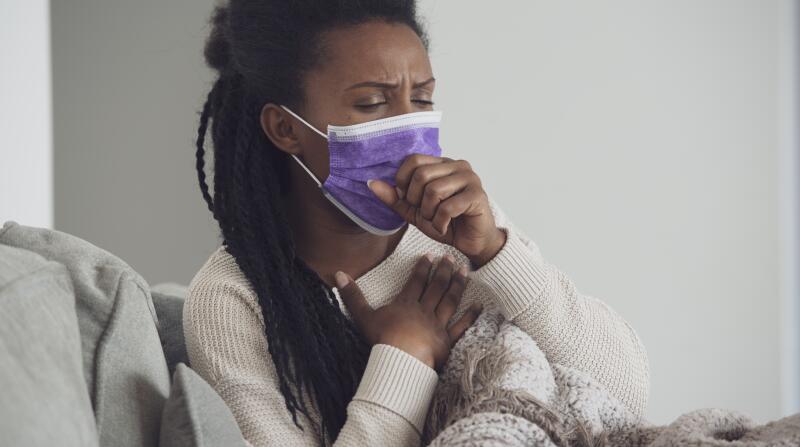9 Highly Contagious Diseases You Should Know About

Medically Reviewed By William C. Lloyd III, MD, FACS
Written By Paige Greenfield Fowler on March 3, 2021
-
 Common ContagionsContagious diseases like Ebola and bird flu frequently make headlines. As scary as they seem, there are other illnesses you’re more likely to encounter. What are they, and how can you keep yourself safe? Keep these eight highly contagious diseases on your radar and find out how to prevent them.
Common ContagionsContagious diseases like Ebola and bird flu frequently make headlines. As scary as they seem, there are other illnesses you’re more likely to encounter. What are they, and how can you keep yourself safe? Keep these eight highly contagious diseases on your radar and find out how to prevent them. -
 1. COVID-19The COVID-19 pandemic began with a 2019 outbreak of a novel coronavirus (SARS-CoV-2) in Wuhan, China, and had reached 175 countries and regions by March 2020. This respiratory infection is mild in most patients, but for high-risk groups, including the elderly or those with chronic conditions, COVID-19 can lead to life-threatening complications such as pneumonia. Washing your hands thoroughly and practicing social distancing--limiting trips outside the house and maintaining a 6-foot distance from others--can help reduce your risk of infection and slow the spread of COVID-19 in your community.
1. COVID-19The COVID-19 pandemic began with a 2019 outbreak of a novel coronavirus (SARS-CoV-2) in Wuhan, China, and had reached 175 countries and regions by March 2020. This respiratory infection is mild in most patients, but for high-risk groups, including the elderly or those with chronic conditions, COVID-19 can lead to life-threatening complications such as pneumonia. Washing your hands thoroughly and practicing social distancing--limiting trips outside the house and maintaining a 6-foot distance from others--can help reduce your risk of infection and slow the spread of COVID-19 in your community. -
-
 2. Norovirus (“Stomach Flu”)Often referred to as “food poisoning” norovirus causes inflammation in your gut, resulting in pain, nausea, diarrhea or vomiting. You can become infected if you come into contact with stool or vomit from an infected person or consume food or drinks contaminated with the virus. Always wash your hands with soap and water after using the bathroom and before preparing or handling food.
2. Norovirus (“Stomach Flu”)Often referred to as “food poisoning” norovirus causes inflammation in your gut, resulting in pain, nausea, diarrhea or vomiting. You can become infected if you come into contact with stool or vomit from an infected person or consume food or drinks contaminated with the virus. Always wash your hands with soap and water after using the bathroom and before preparing or handling food. -
 3. InfluenzaKnown simply as “the flu,” the influenza virus causes symptoms, such as fever, chills, cough, sore throat, runny or stuffy nose, body aches, headache, and fatigue. The flu virus spreads through droplets from an infected person’s cough or sneeze. You can also get sick by touching a surface that has the virus on it and then touching your mouth, eyes or nose. The best ways to prevent it are getting a flu vaccine each year, washing your hands often, and avoiding touching your face.
3. InfluenzaKnown simply as “the flu,” the influenza virus causes symptoms, such as fever, chills, cough, sore throat, runny or stuffy nose, body aches, headache, and fatigue. The flu virus spreads through droplets from an infected person’s cough or sneeze. You can also get sick by touching a surface that has the virus on it and then touching your mouth, eyes or nose. The best ways to prevent it are getting a flu vaccine each year, washing your hands often, and avoiding touching your face. -
 4. MeningitisMeningitis is inflammation of the protective membranes around the brain and spinal cord. Symptoms include nausea, vomiting, sensitivity to light, and confusion. Bacterial meningitis is the most contagious of the several types of meningitis. Some of these bacteria spread through saliva and mucus, so you can get it by kissing someone with meningitis or sharing utensils. Antibiotics can help treat bacterial meningitis and there are vaccines to prevent it. Although most people recover fully, meningitis can cause serious complications, such as brain damage and hearing loss, so visit your doctor as soon as you notice symptoms.
4. MeningitisMeningitis is inflammation of the protective membranes around the brain and spinal cord. Symptoms include nausea, vomiting, sensitivity to light, and confusion. Bacterial meningitis is the most contagious of the several types of meningitis. Some of these bacteria spread through saliva and mucus, so you can get it by kissing someone with meningitis or sharing utensils. Antibiotics can help treat bacterial meningitis and there are vaccines to prevent it. Although most people recover fully, meningitis can cause serious complications, such as brain damage and hearing loss, so visit your doctor as soon as you notice symptoms. -
 5. Hand, Foot and Mouth Disease (HFMD)HFMD is a contagious illness caused by several different viruses. Symptoms progress from fever and sore throat, to painful mouth sores, to a skin rash on the hands, feet, knees, elbows and buttocks. You can catch HFMD by coming into contact with an infected person’s saliva, stool, or blister fluid, or by touching objects that have the virus on them. Although there’s no specific treatment, over-the-counter medications can relieve symptoms like pain and fever.
5. Hand, Foot and Mouth Disease (HFMD)HFMD is a contagious illness caused by several different viruses. Symptoms progress from fever and sore throat, to painful mouth sores, to a skin rash on the hands, feet, knees, elbows and buttocks. You can catch HFMD by coming into contact with an infected person’s saliva, stool, or blister fluid, or by touching objects that have the virus on them. Although there’s no specific treatment, over-the-counter medications can relieve symptoms like pain and fever. -
-
 6. PertussisAlso known as whooping cough, pertussis is a highly contagious respiratory disease caused by the bacterium Bordetella pertussis. The infection causes uncontrollable coughing fits that result in a “whooping” sound and make it difficult to breathe. It’s most common in infants and can be deadly, especially in babies younger than one. The best way to prevent pertussis is by getting immunized. Most healthcare providers recommend a booster every 10 years because the vaccine fades over time.
6. PertussisAlso known as whooping cough, pertussis is a highly contagious respiratory disease caused by the bacterium Bordetella pertussis. The infection causes uncontrollable coughing fits that result in a “whooping” sound and make it difficult to breathe. It’s most common in infants and can be deadly, especially in babies younger than one. The best way to prevent pertussis is by getting immunized. Most healthcare providers recommend a booster every 10 years because the vaccine fades over time. -
 7. Sexually Transmitted Infections (STIs)STIs are passed through sexual contact. In the United States, about 19 million new infections occur every year. There are many different types of STIs, including chlamydia, genital herpes, gonorrhea, hepatitis B, HIV/AIDS, syphilis, and others. STIs can be serious: They can lead to cancer, infertility, pregnancy complications, infections in other parts of the body, and even death. Using condoms for all types of sexual contact can protect you against STIs.
7. Sexually Transmitted Infections (STIs)STIs are passed through sexual contact. In the United States, about 19 million new infections occur every year. There are many different types of STIs, including chlamydia, genital herpes, gonorrhea, hepatitis B, HIV/AIDS, syphilis, and others. STIs can be serious: They can lead to cancer, infertility, pregnancy complications, infections in other parts of the body, and even death. Using condoms for all types of sexual contact can protect you against STIs. -
 8. MRSAMethicillin-resistant Staphylococcus aureus (MRSA) is a type of bacterial infection resistant to several antibiotics. MRSA causes skin infections that appear as a bump or an irritated area. It may be red, swollen, painful and warm. You may also have a fever. You can catch MRSA by coming into contact with pus from infected wounds, so wash your hands often if someone in your household is infected. MRSA can cause serious problems, including bloodstream infections and pneumonia. Contact your doctor if you think you may have MRSA.
8. MRSAMethicillin-resistant Staphylococcus aureus (MRSA) is a type of bacterial infection resistant to several antibiotics. MRSA causes skin infections that appear as a bump or an irritated area. It may be red, swollen, painful and warm. You may also have a fever. You can catch MRSA by coming into contact with pus from infected wounds, so wash your hands often if someone in your household is infected. MRSA can cause serious problems, including bloodstream infections and pneumonia. Contact your doctor if you think you may have MRSA. -
 9. Tuberculosis (TB)TB is a relatively rare disease in the United States, but it’s common in other parts of the world and is highly contagious. TB is caused by a bacterium that attacks the lungs and causes coughing, chest pain, and other symptoms. Left untreated, it can be deadly. TB bacteria are released into the air when a person with TB coughs, sneezes or speaks. You can become infected simply by breathing in the contaminated air. If you think you may have been exposed, contact your doctor about testing. If you are infected, there is medicine to prevent the infection from getting worse.
9. Tuberculosis (TB)TB is a relatively rare disease in the United States, but it’s common in other parts of the world and is highly contagious. TB is caused by a bacterium that attacks the lungs and causes coughing, chest pain, and other symptoms. Left untreated, it can be deadly. TB bacteria are released into the air when a person with TB coughs, sneezes or speaks. You can become infected simply by breathing in the contaminated air. If you think you may have been exposed, contact your doctor about testing. If you are infected, there is medicine to prevent the infection from getting worse.
9 Highly Contagious Diseases You Should Know About












